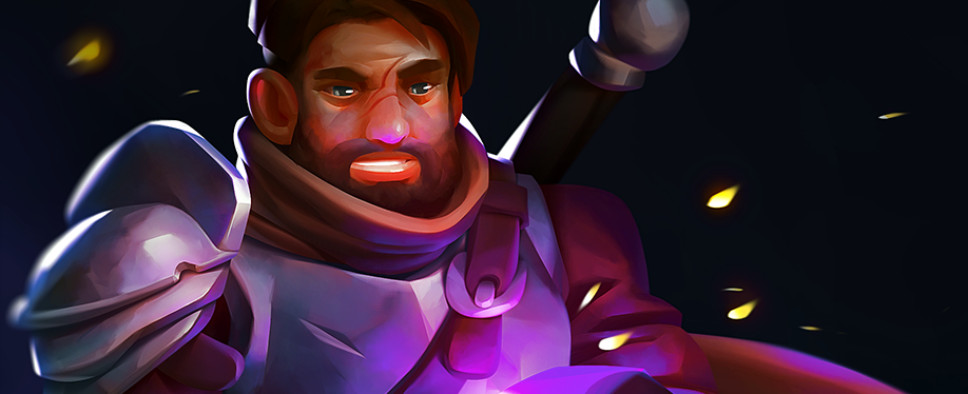Stoneshard Update #54 - Geomancy
-
Category: News ArchiveHits: 1845

An earlier development update for Ink Stains Games' roguelike RPG Stoneshard was dedicated to the game's fire-based Pyromancy skill tree, and now the latest update picks up where that one left off and tells us a bit about another school of magic we'll be able to master in Stoneshard - Geomancy. If hurling boulders is what you're all about, then you should definitely check it out, especially since it features some neat sample animations.
Here are the text parts:
Greetings everyone!
Our monthly devlog has arrived. As was promised, we present the second magic skill tree – Geomancy. In fact, the development progress over the last month was rather substantial (overall we have finished or have nearly finished a dozen of skill trees), so it doesn't all fit in a single devlog. As a result, we settled on presenting one of the more interesting skill trees.
To be frank, creating Geomancy wasn't easy. Each skill has gone through at least a couple of reworks and many of them now differ greatly from the original intent. Nevertheless, the skill tree benefited greatly as a result. As we see it, we have achieved our goal – to make an interesting and visually impressive magic school, backed up by some unique mechanics.
The main idea behind geomancy is that most spells of this school require a conductor, a runic boulder which has many uses. All in all the skill tree ended up fairly versatile: there are buffs, disables, an extremely effective single target spell and some powerful AoE effects.
Runic Boulder
A foundation for the entirety of the skill tree. A caster raises a boulder from the ground, knocking back adjacent enemies and dealing some magic damage. Runic boulders don't have a cooldown, so they can be raised in a quick succession though only three can exist simultaneously.
These summoned entities have three possible functions:Stone Armor
- Support. Each runic boulder within your range of vision grants a single tier of Runic Empowerment to the character, increasing magic power and energy regeneration. It also reduces received damage and your cooldowns.
- Positioning. Boulders can strategically shape the battlefield, serving as obstacles wherever required. However this option should be used with care. If the boulder is destroyed, a sudden severance of the link with it will stun the caster for three entire turns.
- Magic. Boulders are used as a resource for some of the more powerful geomancy spells . However maintaining the buff or blocking an enemy can sometimes prove more strategically sound than an opportunity for direct damage. The choice is yours.
This spell is useful for a variety of builds. It can serve well to a mage (to boost their limited survivability) or to help a warrior who decides to dabble in magic. In addition to greatly raising the resistances to all types of damage, Stone Armor also explodes at the end of its duration, delivering the more damage the more attacks it absorbs. A great finishing move for a large fight.
Stone armor's duration is directly linked to the tier of Runic Empowerment. Raising new boulders prolongs this spell automatically.
Petrification
A fairly effective AoE disable which has a chance to turn all enemies within its area of effect into stone for few turns. The damage dealt to petrified enemies is greatly reduced which makes Petrification more suitable for creating an opportunity to escape and catch your breath than to finish the enemy off immediately. In addition, nearby petrified enemies grant you a benefit of increasing the power of other geomancy spells.
Stone Spikes
This spell destroys a targeted runic boulder, summoning stone spikes on its adjacent tiles. Affected enemies receive decent physical damage with a chance of knockback. The spikes formed on the emptied tiles remain there for 20 turns, allowing you to block off large areas. However, you shouldn't rely on this effect too much – it doesn’t take long for a strong enemy to bash through spikes.
Earthquake
A very effective AoE debuff & disable, this spell synergises well with many other skills and even entire skill trees. It destroys a targeted boulder, creating an earthquake which slightly damages everyone within its area. Earthquake also burns energy of the affected targets each turn with a chance to stun while lowering stun and knockback resistances.
Boulder Throw
This is perhaps my personal favourite method to initiate a fight. Or to effectively end it. This spell rips a targeted boulder from the ground and launches it at the enemy, delivering significant blunt and arcane damage. The enemy has a high chance to be knocked back and stunned. The power of this spell is affected by the distance – the further the throw, the more damage the boulder inflicts.
Runic Explosion
Destroys a boulder, provoking an immensely powerful magic explosion within a large area. Surviving enemies have a high chance to be stunned and knocked backed by the resulting blast wave. Caster'll also restore some energy per each enemy killed by the explosion.
Now lets get to the second part – passive abilities:
- Rune of Enfeeblement – reduces physical and stun resistances for enemies adjacent to runic boulders.
- Rune of Binding – raising a boulder slightly decreases energy cost of the skills used during the next turn.
- Rune of Absorption – reduces geomancy spells' cooldowns by 1 for each enemy hit by Stone spikes.
- Rune of Fortification – increases base duration for Stone armor, increases blunt damage delivered by stone spikes as well as improves maximum durability of runic boulders and stone spikes
- Rune of Destabilization – enemies affected by Earthquake take increased damage and have a higher fumble chance.
- Rune of Cycle – reduces geomancy spells' cooldowns for each enemy affected by Runic explosion.
- Rune of Sustention – killing an enemy restores durability of runic boulders. Also reduces energy cost for skills used during the next turn.

